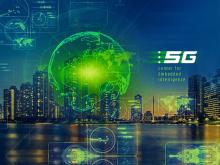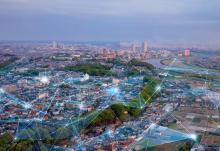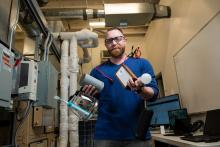AWC Capabilities

Advanced Wireless Communications @ PNNL

PNNL has a rich history with more than a decade of experience and leadership researching advanced mobile communications, including wireless, embedded, and radiofrequency. PNNL’s history in research and development has ranged from standards definition and reference design, to the monitoring of wide spectrum communication, to low-power protocol development (hardware, firmware, antenna design, testing requirements, and execution), to cybersecurity (enhance, detect, identify, and/or characterize mobile communications, and embedded firmware changes), and most recently to Internet of Things connectivity.
Advanced Wireless Communications Lab

PNNL is home to an array of laboratory spaces dedicated to cybersecurity testing and evaluation that allow us to support sponsors seeking to conduct cyber vulnerability assessments on mission-specific devices and systems. We also verify cybersecurity of equipment and systems used in information technology and operational technology, reproduce operational environments, and enable systems of systems in the Advanced Wireless Communications Lab.
Embedded and Artificial Intelligence

PNNL is merging its rich history in advanced wireless communications with our expertise in cybersecurity, artificial intelligence, sensors systems, and Internet of Things connectivity. Our forward-leaning focus on the nexus of these technologies allows PNNL to address the challenges presented by a hyper-connected, physical-digital, 5G world reliant on edge computing to create autonomy at a whole new level, changing the future threat landscape. Additionally, PNNL's analytic and machine learning methods are separating useful data from noise, increasing predictive power and efficiency of computational models, and aiding in decision making to address important national and global issues. Encompassing a multidisciplinary data science community, our capabilities include few-shot learning, domain-aware artificial intelligence, artificial intelligence assurance, and co-design of artificial intelligence architectures.
Supply Chain Risk Management

Today’s electronic devices and their associated supply chains have grown more complex over time, making trust in critical systems built from these technologies difficult. Advancements in features, functions, materials, suppliers, and sources can both add and detract from the security of items needed to perform complex tasks. This is especially true with the advent of 5G infrastructure and 5G enabled and connected devices. The validation and verification of components and devices integrated into systems enables trust and confidence for the end user, however few organizations have ready access to the technical experts and highly specialized tools and equipment required to perform validation and verification.
Software Defined Networking

Software Defined Networking (SDN) is a mature technology in IT environments and is an emerging technology in OT environments. SDN has the potential of significantly increasing resilience and security of OT networks. Standard IT SDN technology is not completely applicable in an OT environment. PNNL developed a capability that demonstrates how SDN can be implemented at scale in an OT environment and developed a “blueprint” and reference architecture for deploying SDN technology to better secure operational networks in the energy sector.
Internet of Things – Common Operating Environment

PNNL established the Internet of Things (IoT) Common Operating Environment (IoTCOE) as an IoT/IIoT research and development laboratory focusing on solving current and future challenges in new technologies, cybersecurity, and the development of the connected devices space. The IoTCOE is made up of two physical spaces deploying over 60 different IoT and IIoT devices for experimentation individually and collectively—and the device list is steadily growing. One space is in PNNL’s Building Management Testbed, a facilities and commercial buildings network. The other space is in PNNL’s Lab Homes (two homes, one control, and one testbed)—each a full-scale replica of a residential home.
Energy Communications Cyber Test Range

Grid control and protection functions are becoming more dependent on data synchronized over large geographic areas and this data’s synchronization relies on the global positioning system (GPS) for accurate timing information. However, utilities have no control over the GPS signals, and GPS has been demonstrated to be vulnerable to spoofing or denial of service attacks. To address the problem of transmitting unsecured data, a wireless and optical fiber-based test range, called the Energy Communications Cyber Test Range, was established at PNNL for evaluating communications system reliability and integrity. The Energy Communications Cyber Test Range is used to develop capabilities to prevent man-in-the-middle and spoofing attacks. The test range’s capabilities can be utilized by other industry, university, and federal partners to test further methods used to protect the U.S. electric grid.